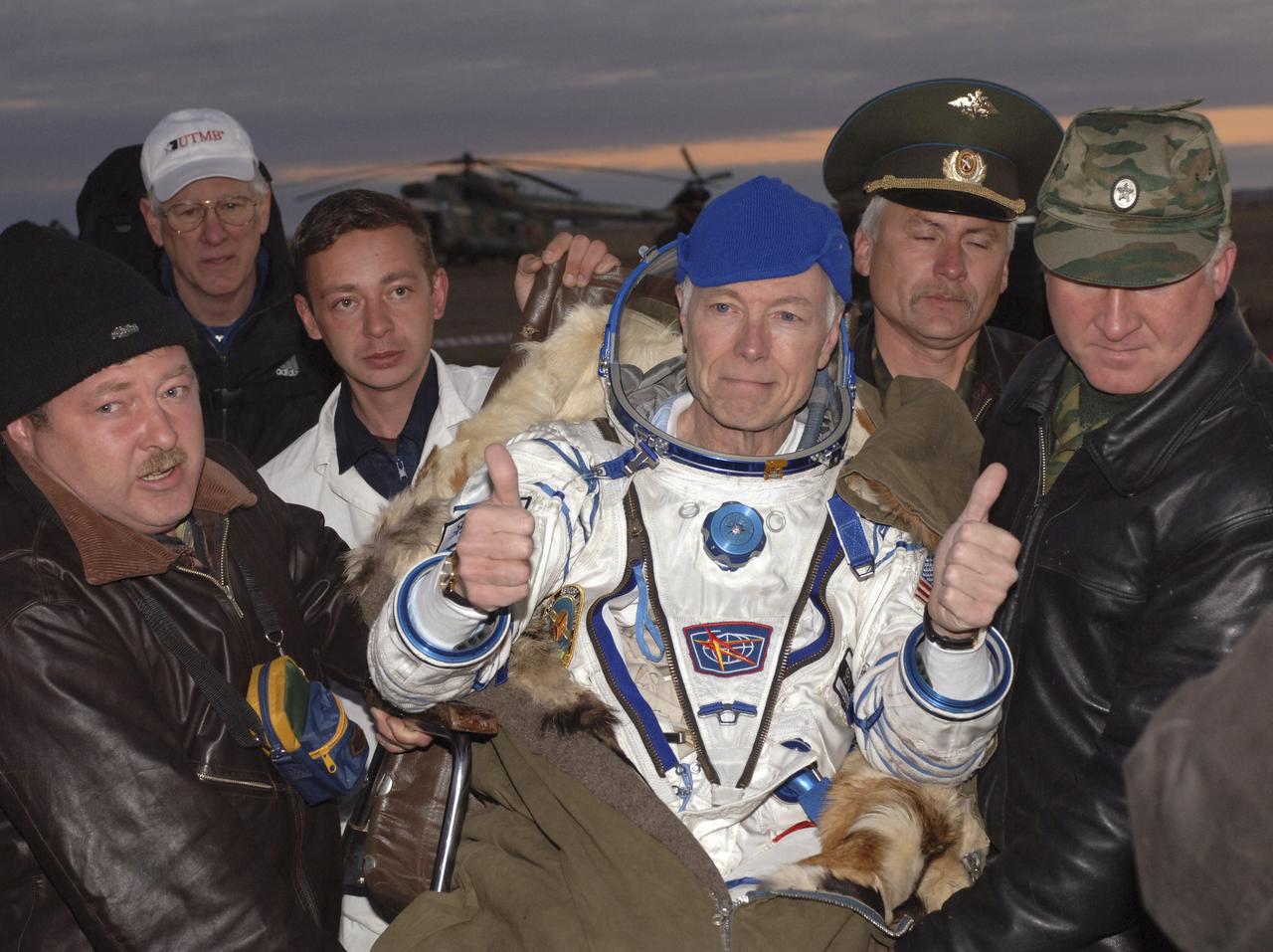Jet Lag Aside, U.S. Space Tourist Greg Olsen Feels Fine

Orbital jetlag aside, space seems to agree with U.S. space tourist Gregory Olsen, who ended his fourth day aboard the International Space Station (ISS) Thursday with a video broadcast to Earth.
Olsen spoke to listeners at Princeton University in Princeton, New Jersey from the space station's U.S.-built Destiny laboratory, though was unable to take questions from the ground as he'd originally hoped.
"One of the things I've learned out in space is that we forget how limited technology really is and how far we have to go," Olsen said.
But unlike his first solo broadcast, which suffered from a satellite communications problem,Olsen - the world's third paying visitor to the ISS - appeared clear and comfortable.
A scientist and entrepreneur who founded the Princeton, New Jersey-based optics firm Sensors Unlimited, Olsen is paying about $20 million for the orbital trip under an agreement brokered with Russia's Federal Space Agency by the Arlington,Virginia-based space tourism firm Space Adventures.
Earlier in his flight, Olsen reported feeling none the motion sickness that sometimes affects astronauts, cosmonauts and other space flyers. However, the station's constant flight around Earth has been slightly disorienting given the 16 sunrises and sunsets that occur every 24 hours.
"There is a little bit of jet lag," Olsen said of his sensation in Earth orbit. "It just really whacks you out. The sun goes down in like a half a minute."
Get the Space.com Newsletter
Breaking space news, the latest updates on rocket launches, skywatching events and more!
Olsen described the view of Earth from 210 miles (337 kilometers) up aboard the ISS as "wonderful," and reported spotting New Orleans - which still appeared flooded from last month's hurricanes- as well as Cape Town, South Africa and Princeton during his spaceflight.
Observing the Earth is part of Olsen's planned science program, which also includes a trio of medical experiments for the European Space Agency (ESA) to better understand how the human body reacts to the weightless environment of space.
"I never thought I'd be doing this, even two years ago," Olsen said, adding that his road to space has been difficult. "Here I am floating in the air."
After declaring his intention to fly up to the ISS in 2004, Olsen later stopped training due to an undisclosed medical condition. In May 2005, that condition had been resolved and Olsen resumed his cosmonaut flight training at Russia's Star City.
Launch and landing
Reflecting on his Sept. 30 EDT launch into Earth orbit aboard the Soyuz TMA-6 spacecraft - which also carried ISS Expedition 12 commander Bill McArthur and flight engineer Valery Tokarev toward the station - Olsen marveled at the flight's speed.
"Once we took off, we reached zero [gravity] in a little over eight minutes," Olsen said. "It's quite a shot, as you can imagine."
Olsen also described is upcoming departure from the space station set for Oct. 10 EDT,when he will return to Earth aboard a Soyuz TMA-6 spacecraft alongside Expedition 11 commander Sergei Krikalev and flight engineer John Phillips. Krikalev and Phillips are handing control of the ISS over to their Expedition 12 counterparts and concluding a six-month mission in space.
"It's mostly a wing and a prayer, and there are some really interesting aerodynamics,"Olsen said of the descent, during which the Soyuz crew capsule separates from the spacecraft's orbital and propulsion modules and enters the Earth's atmosphere."It's like the Apollo [capsule], except it's bell-shaped."
Olsen said he looks forward to returning to the U.S. after his flight. He expects to make one more video broadcast on Oct. 7 between 6:30-7:00 p.m. EDT (2230-2300 GMT).
Join our Space Forums to keep talking space on the latest missions, night sky and more! And if you have a news tip, correction or comment, let us know at: community@space.com.

Tariq is the Editor-in-Chief of Space.com and joined the team in 2001, first as an intern and staff writer, and later as an editor. He covers human spaceflight, exploration and space science, as well as skywatching and entertainment. He became Space.com's Managing Editor in 2009 and Editor-in-Chief in 2019. Before joining Space.com, Tariq was a staff reporter for The Los Angeles Times covering education and city beats in La Habra, Fullerton and Huntington Beach. In October 2022, Tariq received the Harry Kolcum Award for excellence in space reporting from the National Space Club Florida Committee. He is also an Eagle Scout (yes, he has the Space Exploration merit badge) and went to Space Camp four times as a kid and a fifth time as an adult. He has journalism degrees from the University of Southern California and New York University. You can find Tariq at Space.com and as the co-host to the This Week In Space podcast with space historian Rod Pyle on the TWiT network. To see his latest project, you can follow Tariq on Twitter @tariqjmalik.









